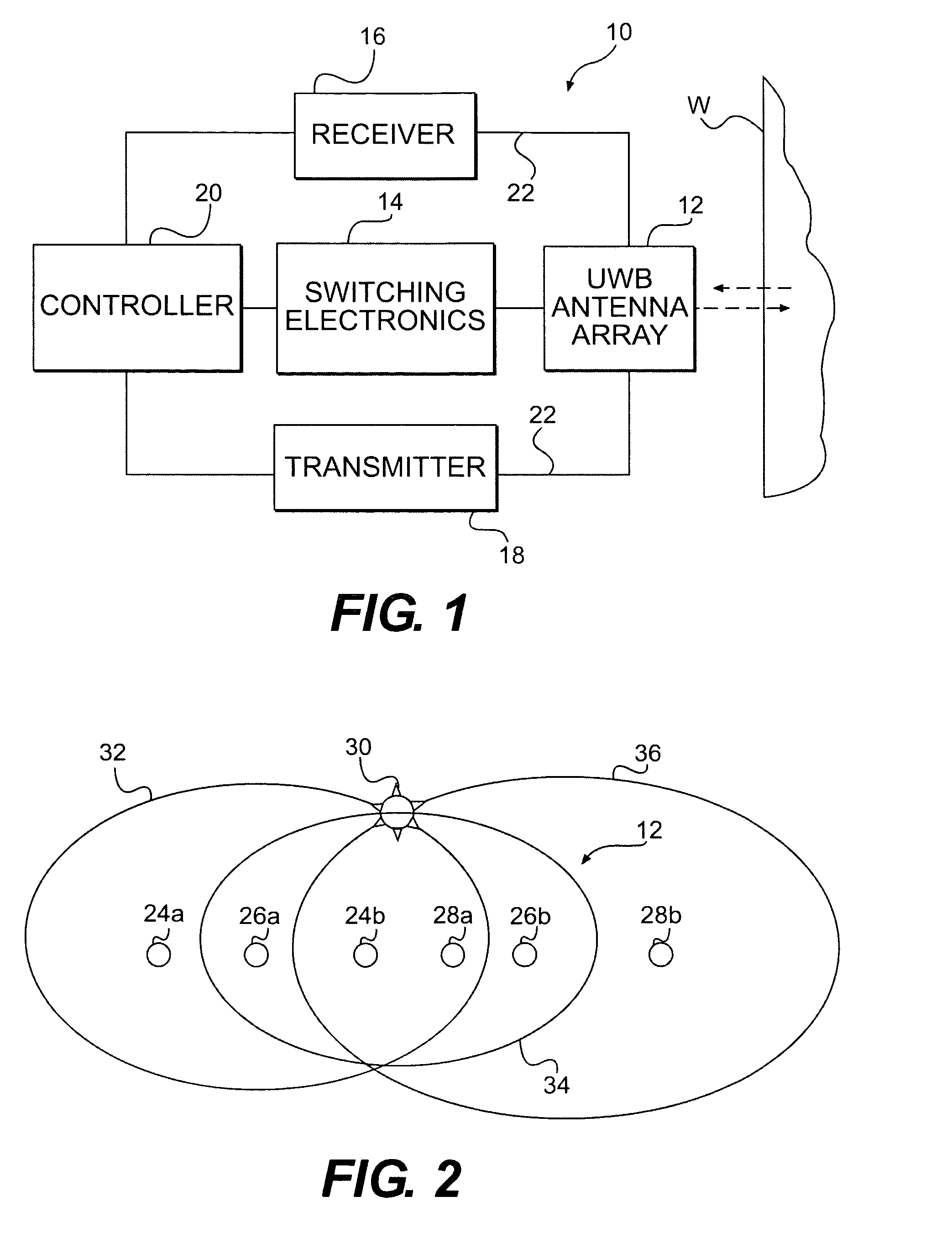Ultra-wideband detector systems for detecting moisture in building walls
a detector system and ultra-wideband technology, applied in the direction of electromagnetic wave detection, measurement devices, instruments, etc., can solve the problems of significant litigation, rotting of structural members of a building, general development of mold problems in buildings,
- Summary
- Abstract
- Description
- Claims
- Application Information
AI Technical Summary
Benefits of technology
Problems solved by technology
Method used
Image
Examples
Embodiment Construction
[0033]One underlying physical principle of the invention is that the reflection of radio frequency waves, i.e., radio waves, from a building material increases with the moisture content of that material. The sensitivity of radio waves to moisture is a result of the large difference between the dielectric constant of water (which has a dielectric constant, ∈r, equal to 81) and that of porous building materials such as wood (which have an ∈r of about 5). The dielectric constant affects the propagation of radio waves in several ways. First, the speed of propagation of electromagnetic waves, c, through a solid is dependent upon the dielectric constant as described by the equation below:
c=√{square root over (μ0μr / (∈0∈r))}
[0034]where
[0035]μ0=the magnetic permeability of free space
[0036]μr=the relative magnetic permeability of the medium to that of free space
[0037]∈0=the permittivity of free space
[0038]∈r=the dielectric constant of the medium.
[0039]The second way in which moisture affects ...
PUM
 Login to View More
Login to View More Abstract
Description
Claims
Application Information
 Login to View More
Login to View More - R&D
- Intellectual Property
- Life Sciences
- Materials
- Tech Scout
- Unparalleled Data Quality
- Higher Quality Content
- 60% Fewer Hallucinations
Browse by: Latest US Patents, China's latest patents, Technical Efficacy Thesaurus, Application Domain, Technology Topic, Popular Technical Reports.
© 2025 PatSnap. All rights reserved.Legal|Privacy policy|Modern Slavery Act Transparency Statement|Sitemap|About US| Contact US: help@patsnap.com



